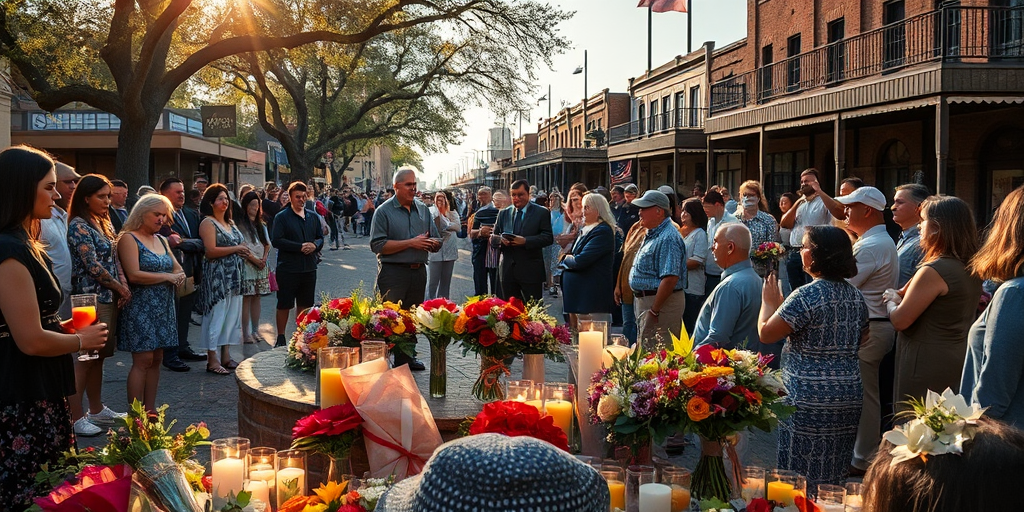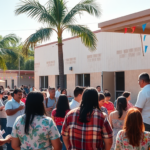High-Speed Chase Suspect Extradited from Mexico to Hidalgo County
Misael Valdez-Tellez, a 20-year-old suspect involved in a high-speed police chase in Edinburg, has been extradited from Mexico to Hidalgo County, emphasizing the ongoing cooperation between U.S. and Mexican authorities in addressing cross-border crime.
The Chase and Its Consequences
In 2023, Valdez-Tellez was identified as the driver of a Ford F-250 involved in a high-speed pursuit that ended in a crash in Edinburg. The chase, which created a significant public safety risk, concluded with Valdez-Tellez crashing into another vehicle, leading to injuries and fleeing the scene without rendering aid. Upon investigation, authorities found a 9mm Smith and Wesson handgun in the vehicle and discovered the truck was stolen from Harris County.
The nature of these events drew significant attention from local law enforcement and prompted a coordinated effort between Texas authorities and their Mexican counterparts to bring Valdez-Tellez to justice. His extradition underscores a commitment to collaboration in tackling criminal activities that span international borders.
Local Law Enforcement’s Response
The Texas Department of Public Safety (DPS) played a crucial role in Valdez-Tellez’s extradition. According to a DPS news release, Valdez-Tellez was in custody at the Federal Corrections Institute in Big Spring, Texas, for illegal reentry into the United States before being transported to Hidalgo County Jail.
“We’ve been actively working with our partners in Mexico to ensure that those who commit crimes in our community are held accountable,” said Major Ricardo Torres from DPS. “Valdez-Tellez’s extradition is a testament to the robust relationship we maintain with Mexican authorities to address issues impacting Valley residents and safety.”
Broader Implications for the Rio Grande Valley
This successful extradition shines a light on the broader implications of cross-border crime for South Texas, particularly in the Rio Grande Valley (RGV). Criminal activities like high-speed chases not only endanger lives but also underscore the ongoing challenges faced by local law enforcement in maintaining public safety.
Jose Hernandez, a local resident and victim of a previous rash of vehicle thefts in the Valley, expressed relief upon hearing of the extradition. “It’s reassuring to see authorities taking these crimes seriously and working together to keep our community safe,” he said.
The Valley is no stranger to the complexities of border-related crimes, and while this extradition represents a win for law enforcement, it also highlights the ongoing need for vigilance and international cooperation.
Connections to Previous Local Events
This incident is not isolated. The RGV has experienced several notable high-speed chases and related crimes in recent years, putting pressure on local services and heightening public concern around security. Previous cases have led to policy evaluations and increased funding for cross-border initiatives aimed at curbing such incidents.
Past initiatives have included community engagement sessions and educational campaigns to raise awareness about the risks and signs of criminal activity in local neighborhoods.
Future Considerations for Safety
Looking ahead, the extradition of Valdez-Tellez could set a precedent for how similar cases are handled in the future. Continued collaboration between U.S. and Mexican authorities is likely to remain a cornerstone of local law enforcement strategies, ensuring swift action and resolution for crime in the RGV.
Moreover, this situation may prompt further discourse on the resources and tools necessary for policing in border regions, including the potential for increased technological support, expanded communication networks, and specialized training for officers.
Araceli Martinez, a policy analyst focusing on border security, commented, “The RGV’s unique position necessitates innovative approaches and strong partnerships to tackle crime effectively. This extradition highlights the potential of international cooperation and could pave the way for more robust safety protocols.”
Resources and Community Involvement
For residents seeking to play a more active role in community safety, various local initiatives and neighborhood watch programs are available. These resources can foster a collaborative atmosphere between the public and law enforcement, encouraging vigilance and reporting to help prevent future crimes.
The continued partnership between law enforcement and the community remains vital. As this story develops, it is a reminder of the shared responsibility in maintaining a secure environment in the RGV.
In sum, the extradition of Misael Valdez-Tellez signifies a victory for law enforcement and community safety in the Valley. While challenges persist, the proactive steps taken serve as a beacon of hope and resilience for the future. As Valley residents reflect on this event, the ties between local impact, community interest, and broader implications become clearer, highlighting the efforts of South Texas in creating a safer region for all.







